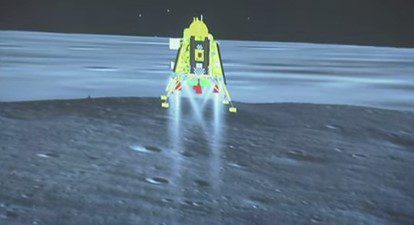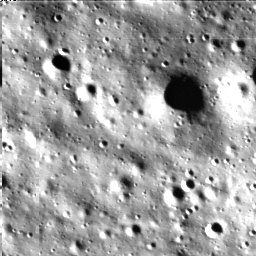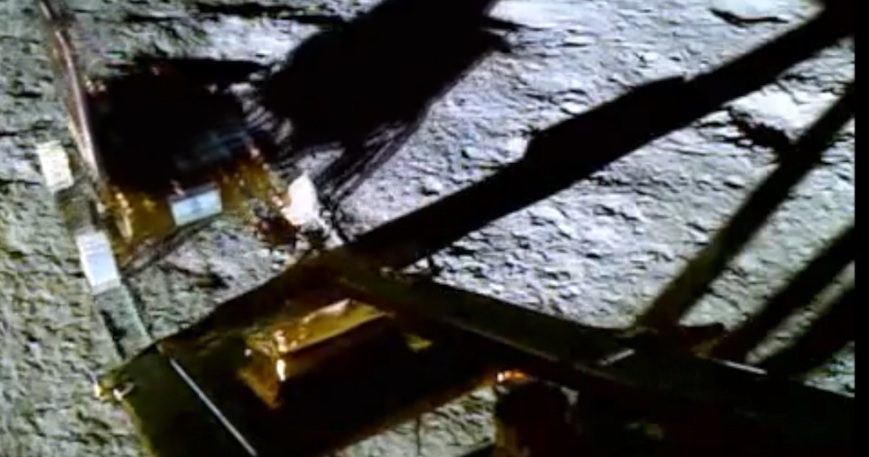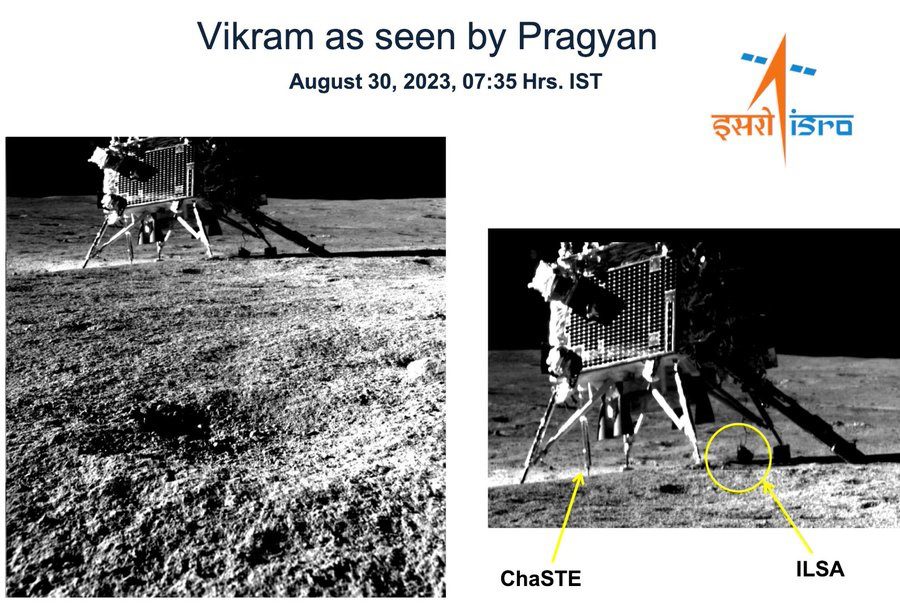India has become the first nation ever to land a spacecraft near the South Pole of the Moon, as well as only the fourth nation in the world to successfully land a spacecraft on the Moon, after the US, the former Soviet Union and China.
After a 19-minute descent from lunar orbit, watched with bated breath by the Indian Space Research Agency (ISRO), the Chandrayaan-3 Vikram lander touched down on the surface of the Moon’s South Pole region around 1234 GMT on 23 August. After the touchdown was achieved, in a televised address India’s Prime Minister Narendra Modi congratulated the team and India itself.

Computer animation of Chandrayaan-3 successfully touching down on the Lunar surface. Courtesy: ISRO
The Chandrayaan-3 mission was launched on an LVM3-2 (GSLV 3-2) rocket from the Sriharikota (Satish Dhawan Space Centre), India, at 0905 GMT on 14 July. The ISRO mission consisted of a propulsion module, lunar lander called Vikram and lunar rover called Pragyan. Its mission was to demonstrate new technologies and to achieve India’s first soft landing on another celestial body, following a failed attempt in 2019 by Chandrayaan-2.

ISRO shared close up images of the Lunar surface from the lander camera taken during its descent. Courtesy: ISRO via X (formerly Twitter)
The Lunar South Pole is of increasing interest for space exploration as scientists believe it could hold an important resource in its shadowed craters: water ice. If found to be the case, it would be a game changer for efforts to establish a permanent base on the moon, as the presence of water would enable astronauts to stay for extended periods. The Lunar South Pole has been observed from orbit before and was first reached by an Indian Impactor as part of Chandrayaan-1 in 2008.
Update on 29 August: The 27 kg Chandrayaan-3 Pragyan lunar rover successfully rolled off the Vikram lander onto the lunar surface at circa 2000 GMT on 24 August.

Chandrayaan-3’S Pragyan lunar rover rolls itself onto the Moon’s surface. Courtesy: ISRO

The Chandrayaan-3 Vikram lander as imaged by the Pragyan rover. Courtesy: ISRO
Comment by Farah Ghouri: Although Russia joined in a global chorus of congratulations for ISRO, just days earlier it made its own, ultimately doomed, attempt to be the first to reach the South Pole region of the Moon. Luna 25 was launched on 10 August and achieved lunar orbit. However, the spacecraft suffered an engine firing anomaly which caused the lunar lander to crash into the Moon. Although the failure highlights the complexity and difficulties of landing on the Moon, ISRO’s historic landing is made more impressive by its modest spending compared with other major space powers. Last year ISRO’s budget was less than a tenth of that spent by NASA.
India is expecting to launch ADITYA-L1, another science mission, later this year. It is a solar science mission destined for the L1 Lagrange point to study the Sun’s corona and will be the first Indian solar mission.








